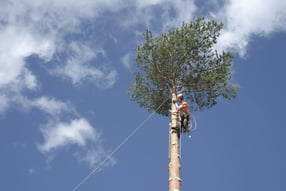Publishing blog content is one of the best ways to build your online presence, boost search traffic, and share valuable information with your target audience. But here’s the challenge: many small businesses launch their websites, start writing blogs, and quickly discover that no one is reading them. Why? Because the posts aren’t optimized for search engines.
In this step-by-step guide, we’ll walk you through how to write SEO friendly blog posts that not only improve your search rankings but also provide a better user experience and drive real results.
Step 1: Choose the Right Blog Topic & Target Keywords
A successful SEO strategy begins with keyword research. Keywords are the exact words and phrases people type into Google, like “contractors near me” or “how to write SEO friendly blog posts.”
Before you start writing, use free tools like Google Keyword Planner or online forums (Reddit, Quora, etc.) to find search terms your audience is using. Focus on long-tail keywords (phrases of three or more words) because they usually match user intent (what the searcher wants to find) more closely and face less competition.
Example: Instead of trying to rank for “SEO,” which is very broad, aim for “how to write SEO friendly blog posts” because it’s more specific and more likely to bring in your target audience.
Step 2: Craft SEO-Friendly Blog Title Tags & Meta Descriptions
Your title tag and meta description are the first things people see in search results, and both play a big role in influencing website clicks. The title tag is the clickable headline displayed in search results. It should be distinct from your on-page blog title, include your target keyword, and stay under 60 characters so it doesn’t get cut off.
The meta description is the short summary that appears just below the title tag. While it doesn’t directly affect search engine rankings, it should still contain your target keyword, clearly describe what the page is about, and stay under 160 characters to display properly.
Example of a title tag: How to Write SEO Friendly Blog Posts | A Beginner’s Guide
Example of a meta description: Learn how to write SEO friendly blog posts step by step, improve your search rankings, and attract more organic traffic.
If your website is built on WordPress, the Yoast SEO plugin lets you edit both your title tag and meta description and preview how they’ll appear in search results.
Step 3: Structure Your Blog With Headings
Headings are like signposts that guide readers (and search engines) through your blog.
-
H1: Your main title. Each blog post should only have one H1.
-
H2: Subheadings for your main sections.
-
H3: Sub-subheadings used for smaller details under an H2.
Think of it like an outline: the H1 is your topic, H2s are your main points, and H3s break those down further. Search engines use these headings to understand what your content is about, and readers appreciate the clear structure.
Step 4: Place Keywords Naturally
Keywords should flow within your content instead of being forced in unnaturally. Keyword stuffing (cramming the same phrase everywhere) can actually hurt your rankings.
Here’s what works best:
-
Use your main keyword in your H1 and the first sentence.
-
Sprinkle keyword variations and related terms in your H2s and throughout your blog.
-
Ensure your primary keyword shows up again in your conclusion.
By focusing on natural writing, you’ll create SEO-friendly content that appeals to both your audience and search engines.
Step 5: Optimize Images for SEO
Images are an important part of user experience and accessibility. They need to be optimized with fast-loading file formats and descriptive alt text so your blog is both inclusive and efficient.
Resize and Export
Compress your images (reduce file size) with a free tool like Squoosh, and use Photopea to adjust dimensions and download images in WebP format, which loads faster than JPG or PNG.
File Names
Don’t upload images with file names like "IMG_1234.png". Rename them so they include your target keyword and are more descriptive. Example: "seo-friendly-blog-post-checklist.webp".
Alt Text
Alt text (short for “alternative text”) is a written description of an image. It helps visually impaired users with screen readers understand what’s on the page, and it also gives search engines more context.
Step 6: Use Internal & External Links
Links are essential for SEO, helping improve site navigation and build credibility. When adding a hyperlink, make sure you apply it to descriptive text (example: “SEO best practices”) and that your target URL is relevant and supports your content.
There are two main types of links:
-
Internal Linking: Link your new blog post to other relevant pages on your website. For example, this blog could link to an SEO services page < that right there is an example of an internal link. This helps readers stay on your site longer and makes it easier for search engines to understand your web pages.
-
External Linking: Link to trusted websites that support your content, like studies or expert advice (for example, this blog could link to Google’s guide on SEO best practices). This helps show readers your information is reliable and builds trust.
And just like you link out to other sites for credibility, you also want other reputable websites to link back to you. These are called backlinks. Think of it like being quoted in someone else’s book - it shows you’re a reliable source. These backlinks are a big factor in building your site’s authority and ranking higher on Google.
Step 7: Format for User Experience & Mobile Devices
Even the best SEO-friendly blog won’t work if it’s hard to read. Most people read blogs on mobile devices, so your content needs to be easy to scan.
-
Use short paragraphs (2–3 sentences).
-
Add bullet points and bold text to highlight main points.
-
Break up sections with headings and images.
This type of formatting lowers bounce rates (how quickly someone leaves your page) and signals to search engines that your content provides value.
Step 8: Add a Call-to-Action
A call-to-action (CTA) tells your reader what to do next, such as contacting you, reading another blog, or downloading a guide. Every blog post should include a CTA at the end, and long-form content can also benefit from adding CTAs throughout or linking key paragraphs to relevant pages.
Example: Ready to improve your blog SEO? Contact Mango Media today for the best digital marketing support.
Turn Every Blog Post into a Results-Driver
Mastering how to write SEO friendly blog posts is a powerful way to boost your online presence, draw in organic traffic, and connect with your target audience. By covering essentials like meta descriptions and alt text, optimizing for mobile devices, and adding internal links, you’re taking key steps toward a strong, sustainable SEO strategy.
Need professional support with writing SEO-friendly blog posts? Connect with us and let your content do more.












